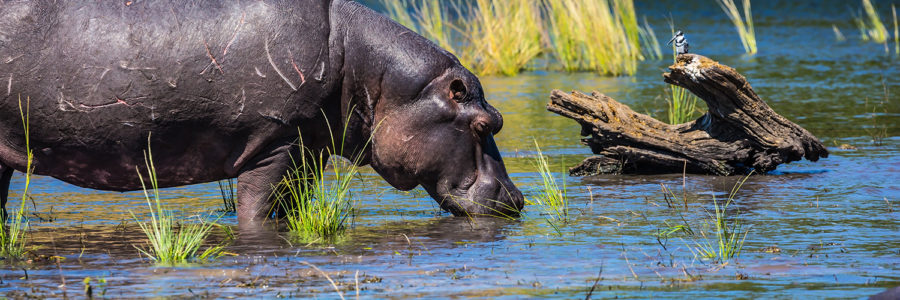Although Elephants dominate with numbers, Chobe National Park along the Chobe River is known as one of the best locations in Safari Africa to see Giraffe. The South African Giraffe has rounded or blotched spots, some with star-like extensions on a light tan background, running down to the hooves. The estimated population in the region of Giraffe is only 32,000. South African giraffes usually live in savannas and woodlands where food plants are available. Giraffes are herbivorous animals. They feed on leaves, flowers, fruits and shoots of woody plants such as Acacia.


